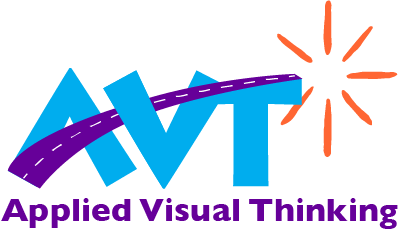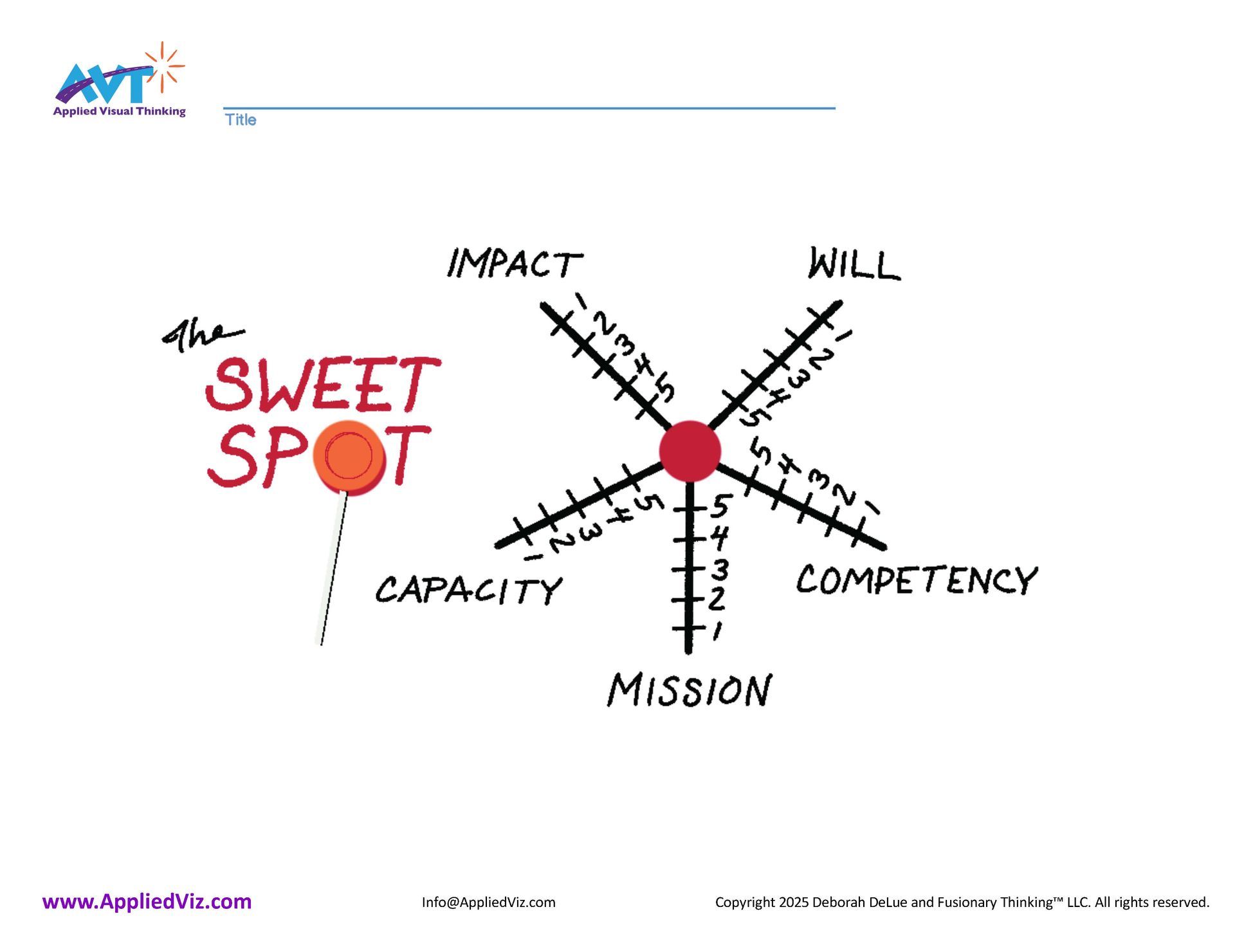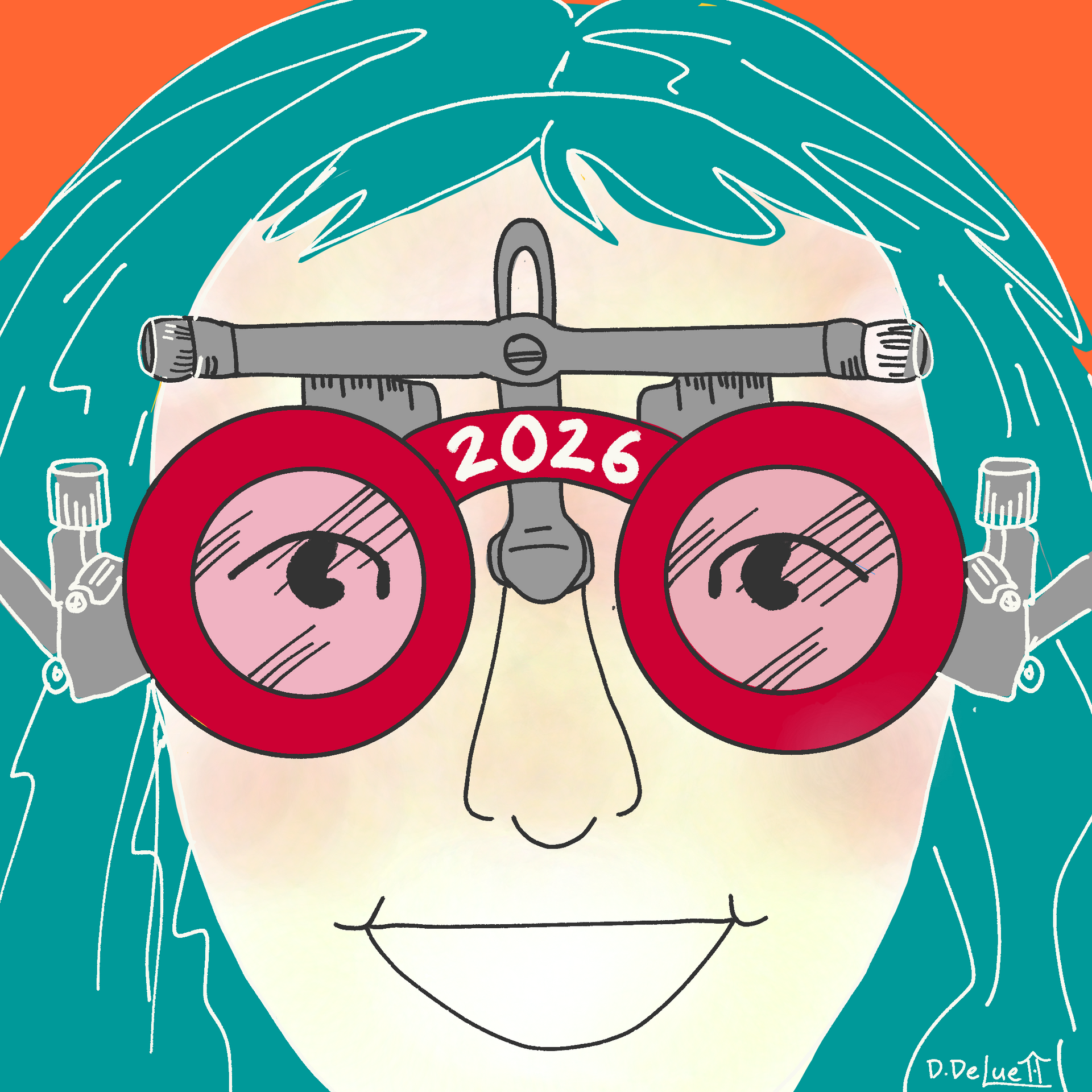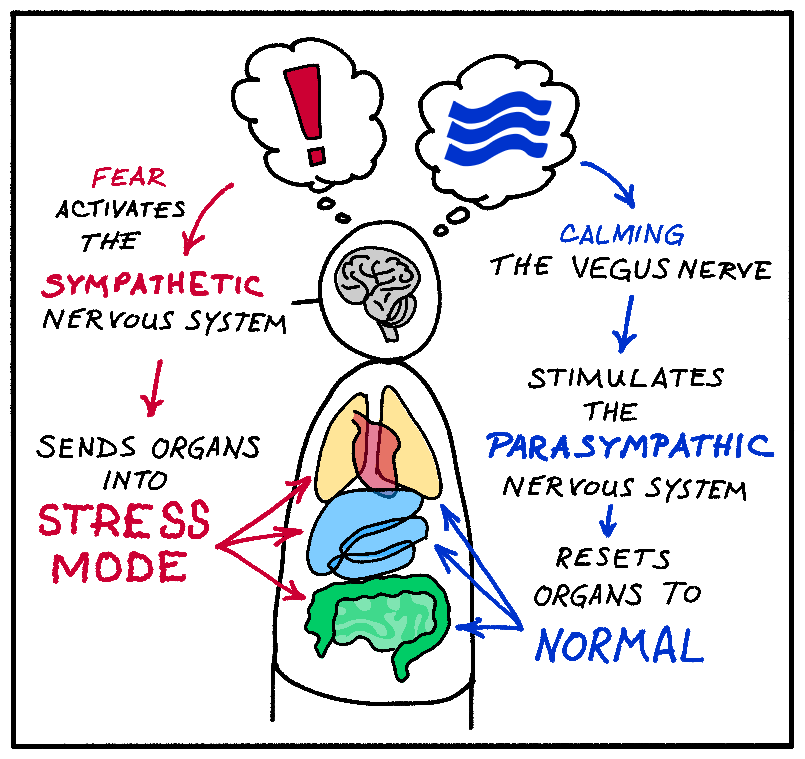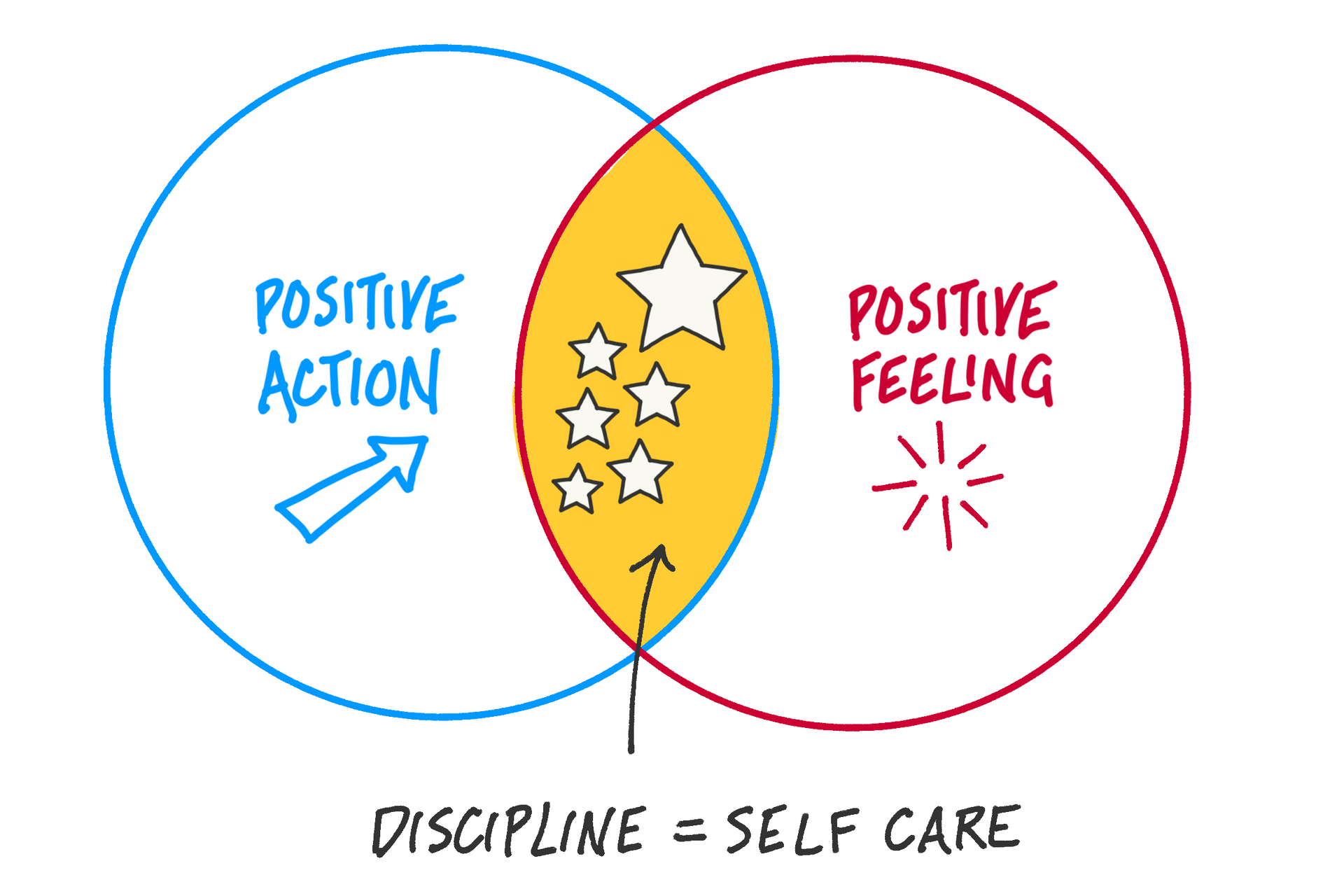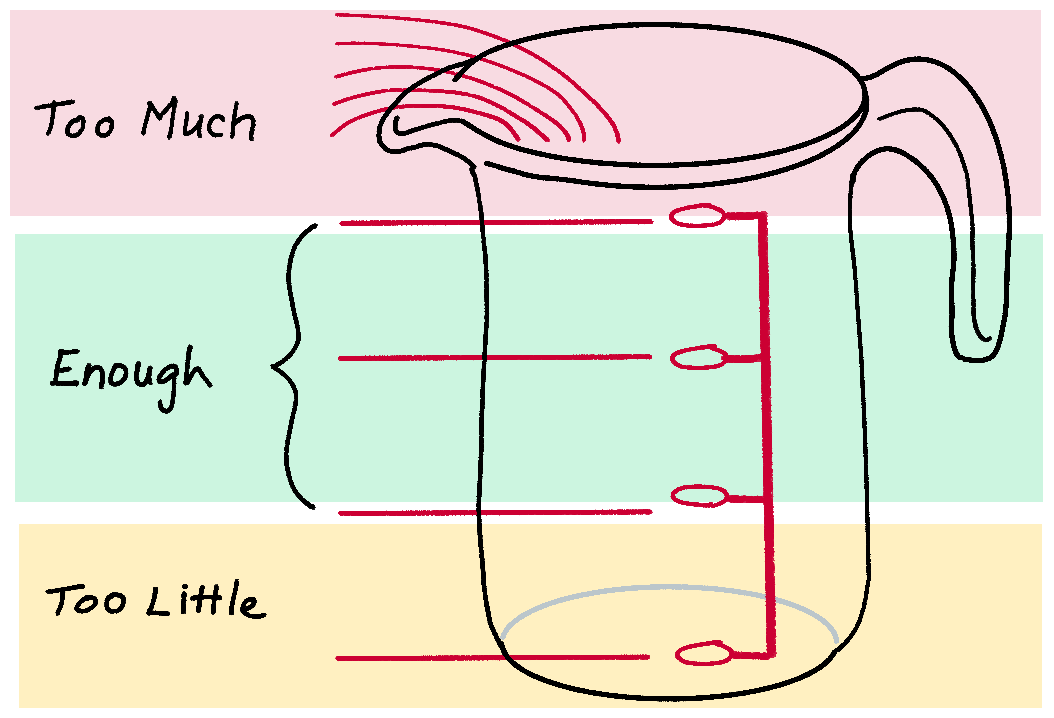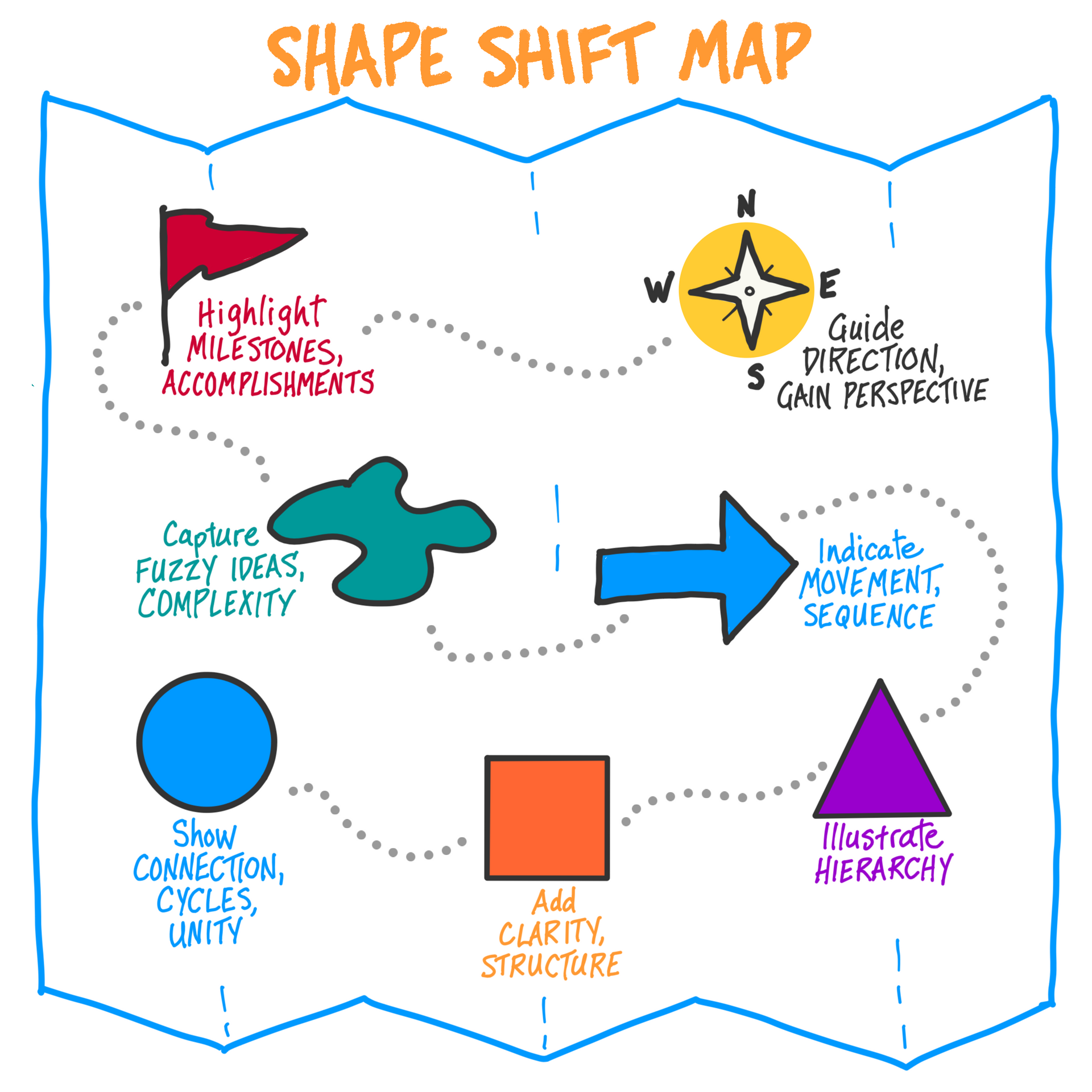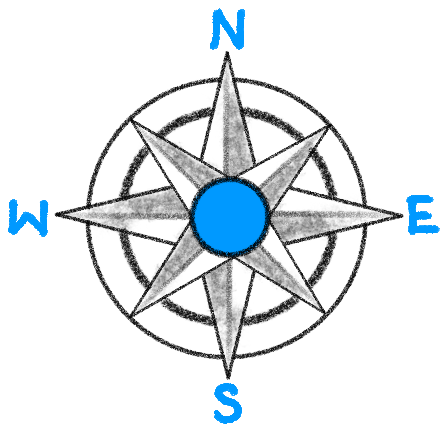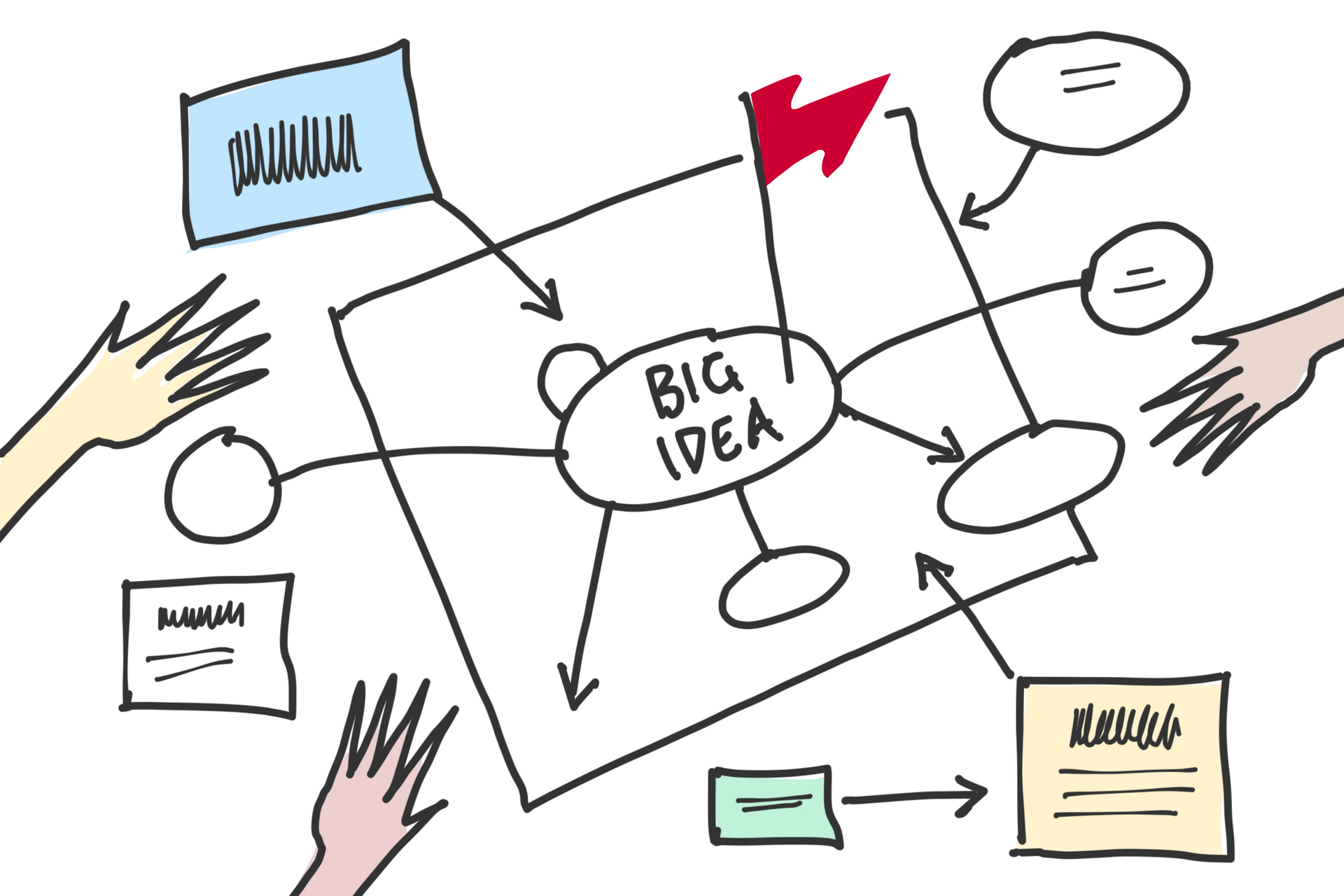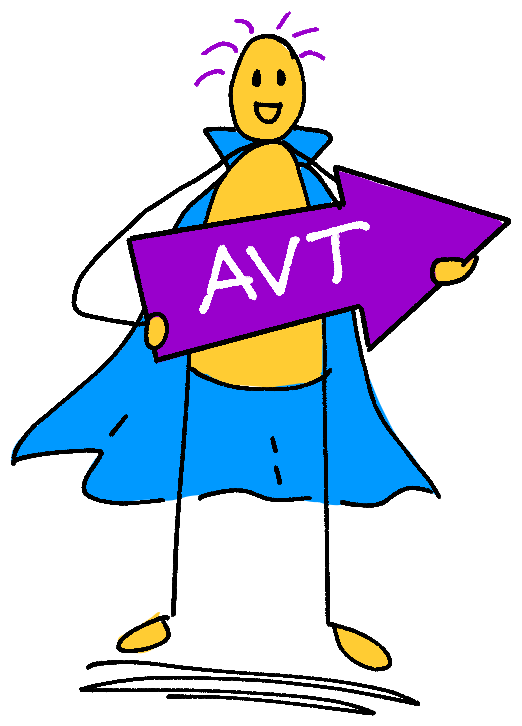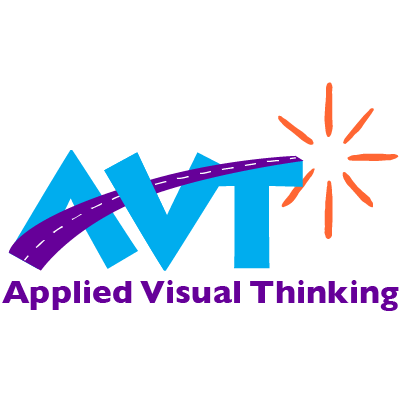Finding Your Sweet Spot: A Visual Thinking Approach to Mutual Decisions
The Art of Applied Visual Thinking
We've all been there—stuck in endless debates about which direction to take, which option to choose, or which idea to pursue. Whether it's your team deciding on a new project, your organization evaluating a future direction, or a committee choosing between proposals, the conversation can quickly spiral into competing priorities and frustration.
The Sweet Spot* tool offers a way out of this dilemma by giving everyone a
shared visual language to evaluate options together. By scoring choices against five critical criteria—Mission, Capacity, Competency, Impact, and Will—you can move from arguing in circles to finding solutions that genuinely work for everyone involved.
I recently encountered a situation that lends itself perfectly to this framework. A local cultural organization faced a dilemma. A youth organization had requests free use of their large meeting room space every Thursday evening for a skills and leadership program. The program serves tweens and teens, which aligns with the organization's mission.
The arrangement sounds like a slam dunk, but there are drawbacks. First, if the room is occupied, the organization loses potential rental income for those evenings, which offsets ongoing maintenance of the aging facility. There are also questions about access, cleanup and wear and tear on the space.
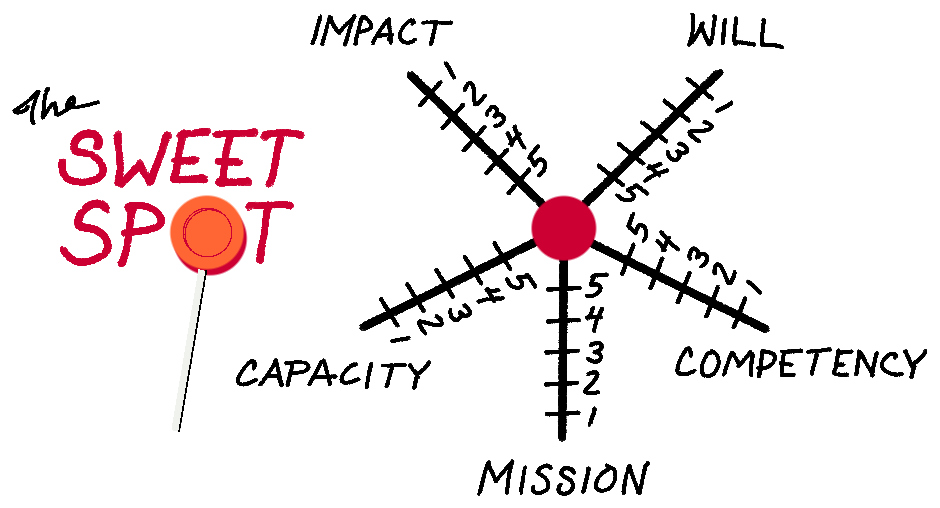
On the other hand, the mission is to serve the needs of the community, and community meeting space is clearly a need.
The organization faces a decision—whether or not to allow the youth program to meet in their facility. One can imagine that passionate arguments could be made both for and against the idea, potentially causing friction among members.
Decisions like this are often made by gut instinct, tradition or simply following the will of the loudest.
What if there were a way to evaluate the pros and cons of the proposal using more objective criteria? How might all the voices in the room be heard equally?
Here's where visuals can save the day.
Imagine the leader of the organization putting up a large sheet of paper with a diagram. In the center of the diagram is a circle. Emanating out from the circle are five lines. Each line is numbered one to five. The ones are positioned at the farthest points away from the middle, fives surround the circle.
The leader explains that the group will be tasked with working together to score the request at hand from 1 to 5 for each of the five criterion: Mission, Capacity, Competency, Impact and Will
The team might find that they can come to consensus scoring each criterion as they share ideas, priorities, concerns and aspirations.
- Mission: 5 — Serving youth aligns perfectly with their purpose
- Capacity: 2 — They have the space, but losing rental income would strain their tight budget
- Competency: 4 — Managing room access was something they already do well
- Impact: 5 — The program could meaningfully change lives for 35+ young people
- Will: 3 — Half the staff is enthusiastic; half is worried about the financial implications
Seeing the scores visually—three high scores, one low one and one in the middle—clarifies that this isn't a "yes or no" decision but a "how can we make this work?" opportunity.
Imagine that within minutes, the team brainstorms solutions that align with the priorities they just discussed: What if the youth organization contributed $50/month? Could they or the youth organization apply for a small grant to offset the revenue loss? What if the youth could help with needed repairs and upgrades to the space in lieu of payment?
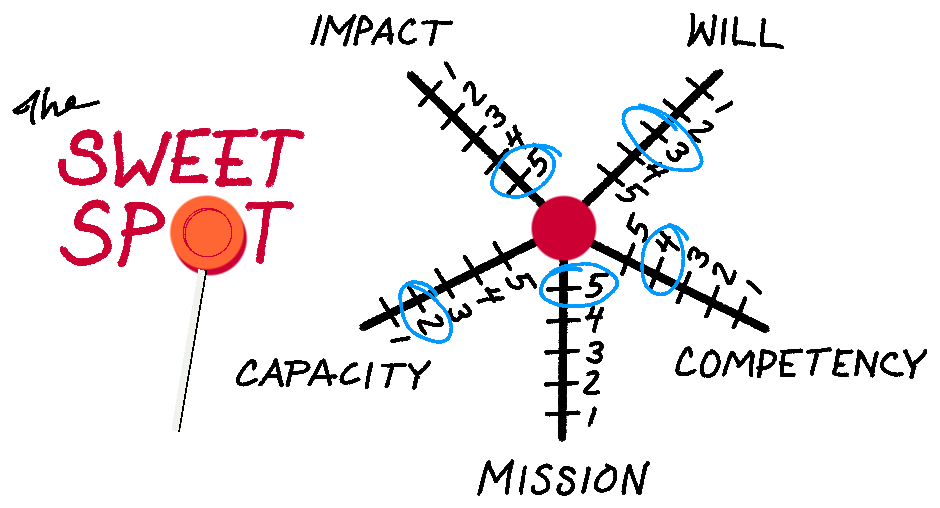
The Sweet Spot for this scenario might be a solution that combines a modest fee structure, a volunteer coordinator and an arrangement where projects are undertaken to supplement fee payments. Using the visual scoring tool can transform advocacy into problem-solving, and honor both the organization's mission and sustainability.
Want to jump in and
give it a try?
Grab a pen and some
paper or download the template and play along.
15-Minute Activity:
Map Your Sweet Spot
Ready to try the Sweet Spot tool with your next decision? Here's a quick visual thinking activity you can facilitate in just fifteen minutes:
What You'll Need:
- Large paper or whiteboard, or a large printout of the template linked here
- Markers in different colors
- The option(s) you're deciding between
The Process:
- Draw the Framework (3 minutes): Copy the Sweet Spot diagram shown here. Label the lines and discuss the following criteria with the group.
- Mission — Does this align with our core purpose and values?
- Capacity — Do we have the resources (time, money, space, people)?
- Competency — Do we have the skills and expertise to do this well?
- Impact — Will this create meaningful, positive change?
- Will — Do we genuinely want to do this? Is there energy and commitment?
2. Define Your Scale (2 minutes): Remind everyone that 1 = "not at all" or "very weak," and 5 = "absolutely" or "very strong." Keep it simple and intuitive.
3. Score Your Option (5 minutes): For each option under consideration, go through each criterion and ask the group: "On a scale of 1 to 5, how does this score?" Discuss briefly and mark your collective score on each line.
4. Analyze the Pattern (5 minutes): Step back and look at your visual map together. Ask:
- Which criteria scored highest? (These are your strengths)
- Which scored lowest? (These are your gaps or concerns)
- Are most scores close to 5? (You're near the Sweet Spot!)
- Are several scores low? (Can you address those gaps, or should you reconsider?)
- What would it take to move a low score higher?
The beauty of this tool: Everyone can see the same picture, which turns "me versus you" into "us looking at this together."
Visual thinking creates shared understanding that words alone rarely achieve. The Sweet Spot isn't about perfection—it's about finding options where most criteria score high, or where low scores can be addressed.
Recap
The Sweet Spot tool transforms decision-making from a battle of opinions into a collaborative exploration. By visually scoring options through five essential lenses—Mission, Capacity, Competency, Impact, and Will—you give your group a shared framework for evaluation. No single voice dominates, and no single criterion wins. Instead, you find solutions that honor your purpose while respecting practical constraints.
The next time you're facing a decision with multiple stakeholders and competing concerns, remember: the goal isn't to win the argument, but to find the intersection where most of your criteria score high. That's your Sweet Spot, and visual thinking is your map to get there. When you identify gaps, you can problem-solve together rather than simply saying yes or no.
*References:
"Sweet Spot" by Sue Phillips, New England Region of the UUA, March 22, 2018. www.uua.org/new-england
